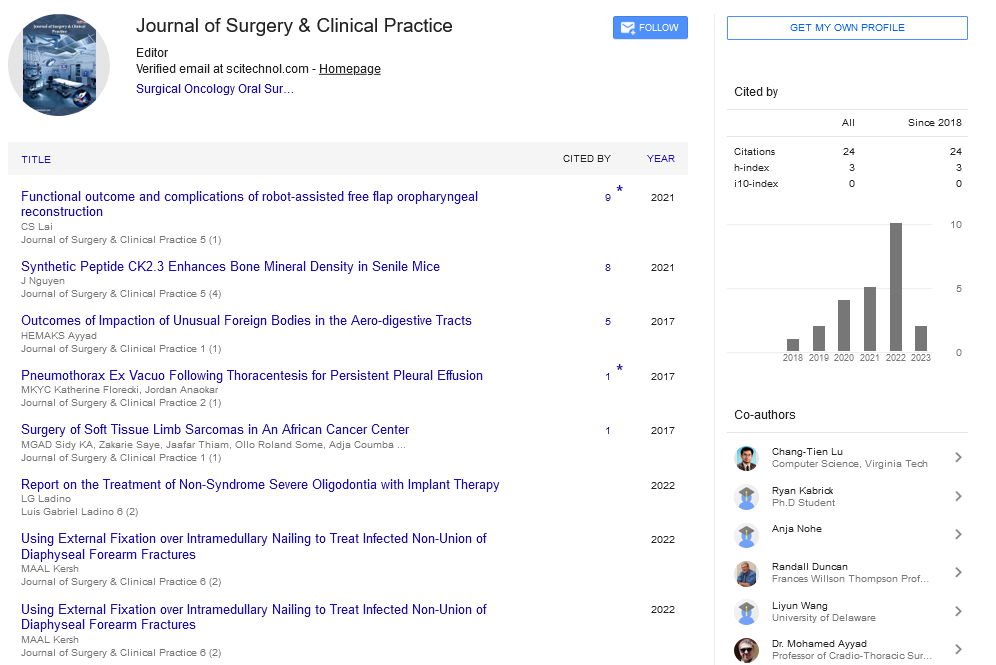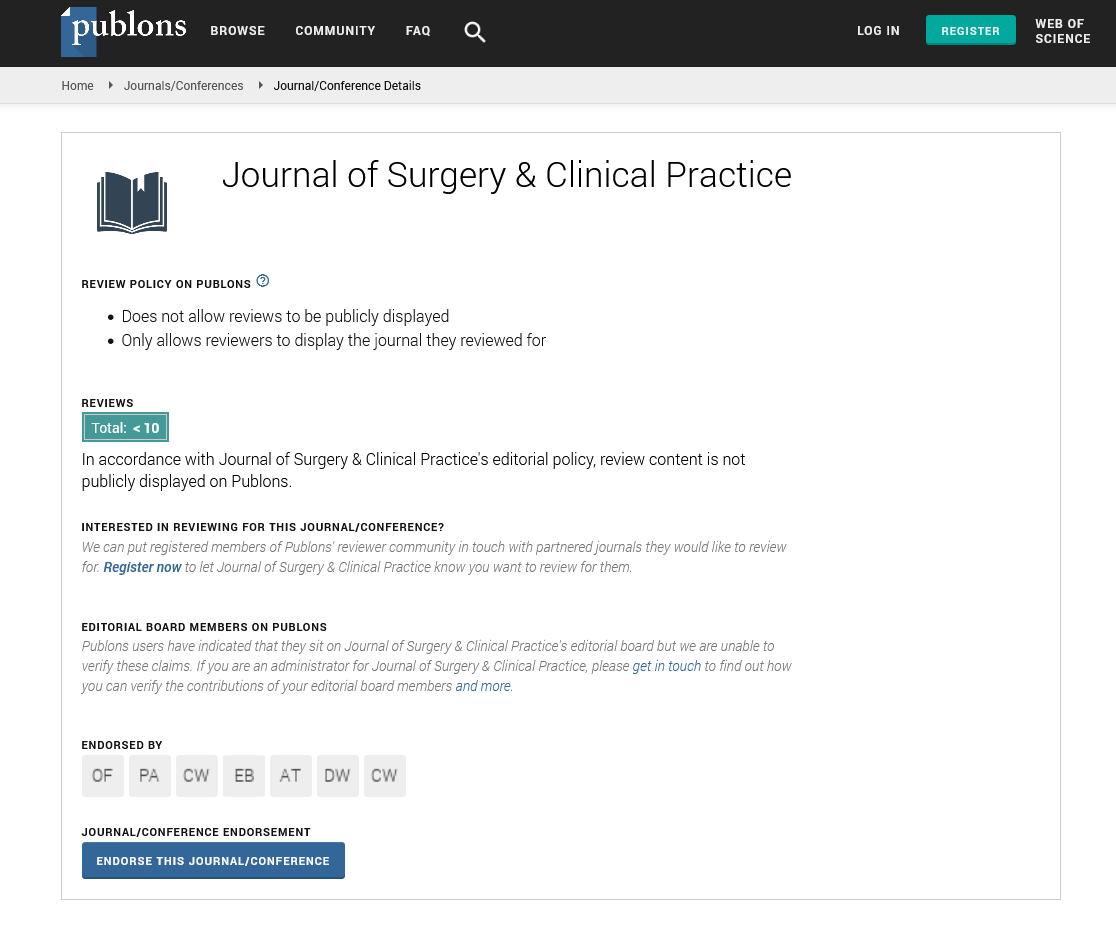Relationship between fat distribution, iron status biomarkers and hepcidin in obese Qatari adults
Abdelhamid Kerkadi
Qatar University, Qatar
: J Surg Clin Pract
Abstract
Introduction: The global prevalence of obesity has reached an alarming rate. In addition to obesity and chronic diseases, high prevalence of micronutrient deficiencies especially iron deficiency anemia (ADA) was observed in many countries.. Among the different potential causes of iron deficiency, the sequestration of iron through an inflammatory mediated was identified as the most probable cause of iron deficiency in obesity. Adipose tissue is recognized as an endocrine organ that contribute to the inflammatory process by secreting proinflammatory cytokines, and The role of hepcidin in the regulation of iron metabolism has been emphasized in recent years. Hepcidin represents the main regulator of intestinal iron absorption and macrophage iron release and, thus, ultimately of the iron available for erythropoiesis. Objectives: To examine the relationship between fat distribution (WC, total body fat %, and trunk fat %), iron status biomarkers and hepcidin in obese Qatari adults
Methods: Secondary data was obtained from Qatar BioBank. The sample size consisted of 100 Qatari obese (male and female) aged 21-50 years free of chronic diseases. Subjects were randomly selected from data base. Collected data included anthropometric measurements (Wt, Ht, BMI, WC, % total fat and % trunk fat), iron status biomarkers (iron, ferritin, transferrin saturation, Hb, RBC), hepcidin and transferrin receptors. IDA was defined as Hb <12g/100ml for female and Hgb <13 g/100ml for male.
Results: A high statistically significant association (P<0.05) was observed between IDA and the increase in trunk and total fat. We noted a decrease in ferritin, Hemoglobin, serum iron and RBC with an increase in % fat. There was a statistically significant correlation between the trunk fat% and iron status indicators: ferritin (r = -0.48), Hb (r= -0.64), serum iron (r= -0.29) and RBC (r= -0.51). Results indicated a significant decrease in hepcidin with an increase in total and trunk fat. A strong negative correlation between hepcidin, total body fat and trunk fat.
Conclusion: The results of this study reported a high prevalence of IDA among obese. Abdominal obesity determined (WC, body and trunk fat) was correlated with iron biomarkers.
Biography
Abdelhamid kerkadi obtained his PhD in Human Nutrition from Department of Nutrition, College of Medicine, University of Montreal, Canada in 1999. He joined Qatar University in 2006 and he was Program Coordinator from 2009-2012. He is currently an Associate Professor in Human Nutrition Program, Department of Health Sciences, College of Arts and Sciences, Qatar University. His research is manly oriented to community nutrition and nutrition intervention especially obesity prevention. He recently received a grant (NPRP-Exceptional) from Qatar national Research Fund. He has published peer-reviewed articles in many journals. He serves as the Editorial Board member of Current Research in Nutrition and Food Science , Journal of Food , Agriculture and Environment and Interenational Journal of Nutrition.
E-mail: abdel.hamid@qu.edu.qa
 Spanish
Spanish  Chinese
Chinese  Russian
Russian  German
German  French
French  Japanese
Japanese  Portuguese
Portuguese  Hindi
Hindi 
